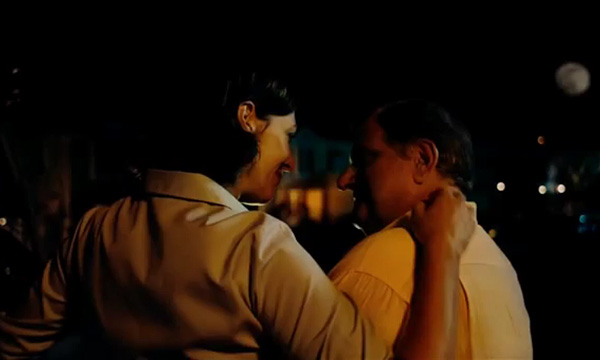For those who liked it, Todd Solondz’s Happiness was a film that admitted no sequels. Twelve years later though, Solondz presents us with Life During Wartime, a “quasi sequel” to his 1998 film. Quasi-sequel. Just the definition the filmmaker chose himself is a good starting point for a discussion.
Three sisters, Trish, Joy and Helen. Each with a life and their problems. Trish, dealing with the shadow of a pedophile husband, wanting to start her life over with another man, trying to protect her children from the trauma. Joy, encumbered with ghosts – literally – from her past, with failed relationships and with a job that’s become too much for her to bear. Helen, with her successful career but continuously on the verge of nervous breakdown.



Basically, Solondz brought back his old characters, imagining what could have happened to them years later Happiness. How their life would be affected and how the situation would be different for them. Mind, I’m saying his characters, not his original cast. Which is kind of baffling: even to very open-minded people seeing tha same character – Allan – turning from a film to the next into a black man while he was previously played by Philip Seymour Hoffman can be rather upsetting. And this is maybe the most noticeable example, but also in other cases the gap separating the two films is, especially in spirit, enormous.
Solondz tries to write witty dialogues for his characters, tries to make their life seem troubled and interesting, tries to convince us their tragedies are worth watching. We can’t sympathize though. Because the characters ultimately look shallow and their reasons mere fabrications of a certain bourgeoisie which appear to be fake imitation of humanity even if you look at it in real life.
The directing and scripting material is ludicrously cheap at times; too conventional solutions are used abundantly all through the film to guide the presumably dumb spectator. Want to tell the audience who’s who? Want to make sure everybody’s getting the references right? Why don’t you attach a couple of pictures to the walls so that people can tell? Why don’t you have actors make a few explanatory speeches now and then? Terribly irritating. The acting is also quite inconsistent and cliched, not only from the younger actors but also from the more experienced ones, and especially some characters sound like parodies of themselves when they open their mouths. The dialogue is not witty in the Woody Allen style, as some critic suggested. Despite very superficial similarities, Life during Wartime is not Hannah and Her Sisters meets A Serious Man. The humor is superficial, not conveying any kind of destabilizing message: it’s an end on its own, and it’s used in a totally frivolous way. The only thing I truly appreciated was the cinematography, bringing out beautiful warm tones; kind of polished in a way, but not tiresome. And Devendra Banhart collaborating for the soundtrack.
Some people said Life During Wartime fails in the fact it is a totally hopeless film, and that its over-depressed characters cannot really have any ambition for a brighter future. I wouldn’t say this is the main fault of the film. I would say the main fault of the film isn’t in its content. It’s in the way the content is handed over. Even hopelessness can be portrayed better than this.
Title: Life During Wartime
Year: 2009
Director: Todd Solondz
Genre: Drama, Comedy
Country: USA
Runtime: 98 minutes
Language: English